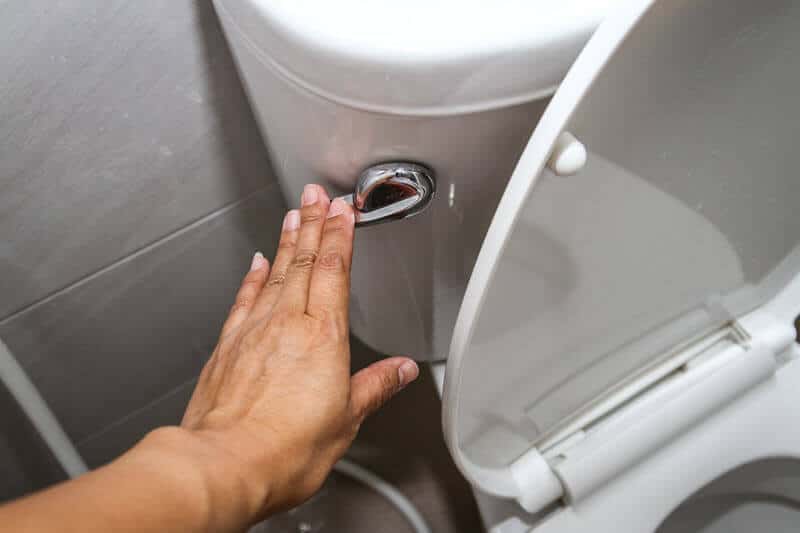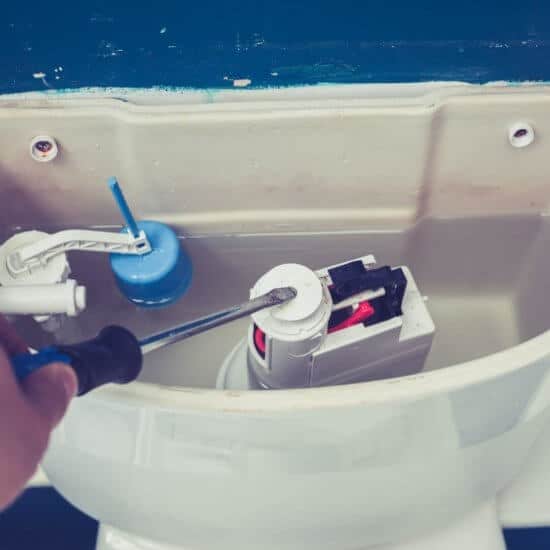Many areas of our homes have gotten smarter over time, including our bathrooms. With the help of new technology, we can even turn our bathrooms into wellness zones. However, when it comes to the toilet, we often don’t pay attention to the latest features on the market. Little do we know that with certain types of toilet flush systems, we can conserve water, improve hygiene, and more.
One of the essential elements of a toilet is the flush system. Even though the flush toilet system is not the most talked-about invention, we cannot function without it. A flush toilet system works mechanically when flushing out the waste through a drainpipe to a sewer system. Unlike a waterless toilet, a macerating toilet or composting toilet, a flush toilet results in a clean toilet bowl.
The essential features of a flush toilet are a waste pipe and a tank of water. The water tank, also known as the cistern, is the part that will be flushed when the lever is pulled.
There are various types of toilet flush systems. Here are some of the most common ones.
Different Types Of Toilet Flush Systems

Whether you are building a new home or need to replace an old toilet, there are plenty of options out there. Toilets differ in shape, style, color, and size. While the appearance will impact the look of your bathroom, the flush system will impact its functionality. Therefore it is essential to choose the right flushing system for your needs.
Here are some significant types of toilet flush systems to consider.
The Ballcock Flush System
The Ballcock Flush System is featured with a ballcock and a plunger. It has a rod with a floating ball attached to one end and a plunger on the other end. The ballcock and plunger are responsible for filling the toilet tank with water. When the rod is triggered, the plunger located on the ballcock will allow the water into the toilet bowl. Without water, this system will not function. It is one of the most common systems found in toilets.
The Flapper-Flush Valve Toilet System
This system is very similar to the ballcock flush system. Instead of a ball, it has a flapper which is filled with air. When the lever triggers the flush on the tank, the flapper will fill with air and float. Once the water level drops, the flapper stops floating and settles back into its seat. After that, the tank will refill, ready for the next flush.
The Siphon Flush Mechanism
The Siphon flush mechanism allows the movement of the waste directly to the trap way to the septic tank. A flushing lever can usually be found on siphoned toilet systems. When you push or pull the lever, it will open the valve. Once the valve is open, it will allow water inflow directly to the toilet water bowl.
Washdown Toilet System
A toilet system like this is made with big trap-ways meant to take water from each trap. The method used in its toilet flush system involves forcing water into the toilet bowl. The waste is then taken out with the water via the trap. It usually has a gurgling sound which is caused by the vacuum seal being broken.
The Pressure-Assisted Toilet System
The pressure-assisted toilet system is a modern design, perfect for big toilet bowls. It is a power-packed system which is designed to use air. The air is under pressure which causes the water to be forced down straight to the bowl. It offers a more substantial flushing power. The only downside to the flush system is that it can be a bit noisy.
The Gravity Flush Toilet System
One of the oldest flushing systems is the gravity flush toilet system. These kinds of toilet systems make use of the flushing pressure that comes from the water. They forcefully direct the waste in the toilet to the trap-way from the bowl. There is no siphoning action after each flush to help keep the bowl clean. The operation of these flush systems is very gentle.
Double Cyclone Toilet System
The most modern toilet flush system on the market is the double cyclone toilet system. This toilet system has two nozzles that direct more water to the siphon, creating a more powerful flush. The force system supports the nozzles and forces water to circle the bowl, cleaning as it flushes. The adequate water flow across the bowl makes the siphon more effective. Since this system is designed to use gravity to carry out the flush, it is very similar to the gravity control toilet system.
Dual Toilet System
Another contemporary design that is popular today is the dual toilet system. Users can choose between a full flush and a fractional flush. It is more water-efficient as excessive water is not always consumed. The full flush uses one and a half gallons of water, while the partial flush uses half a gallon. The flushing is controlled by a flush control key that gets pressed when needed.
The Rear Flush System
The rear flush system is also known as the upflush or macerating flushing mechanism. It holds a separate macerator chamber where the solid waste is grounded and expelled out of the bowl. The toilet bowl has a different design than most other toilets. Many European countries use this kind of toilet as it uses little space. This type of toilet effectively carries out the flush as its device supplies pressure on every flush.
What Is Flush Valve On A Toilet?

A flush toilet has a flush valve in the center inside the toilet tank, which moves the water into the bowl. It is either a plastic or brass fitting attached to the bottom of the cistern tank. Flush valves can be found in different sizes, depending on the design of the toilet. Larger flush valves tend to move water faster which leads to a better flush. The type of flush valve will differ for different types of toilet flush systems. [1]
How Does a Toilet Flush Valve Work?

The primary purpose of the flush valve is to rush water from the cistern into the toilet bowl. This water will wash the waste away when the flush button gets pushed. The button connects to the flush valve by a cable. So, when the toilet is flushed, the cable pulls the flush valve and lifts it up.
The flush valve also has a rubber seal which lifts with the valve when flushed. After the flush, when the flush valve drops back, the rubber features help seal the tank to fill with water.
By knowing what flush valve a toilet has, you will better understand the type of flush you will be getting. Here are the types of flush valves commonly found in different types of toilet flush systems.
Types Of Flush Valves
Standard Flush Valve
Standard flush valves are the most common types found in toilets. They consist of a primary 2-inch valve and flapper that lifts when you flush the toilet. Many low-flow and older toilets have standard flush valves. These flush valves are easy to change.
3-Inch Flush Valve
A larger 3-inch flush provides faster water flow into the bowl and down the drain. There is a substantial flushing power difference between a 2-inch and a 3-inch flush valve. These types of flush valves are also reasonably easy to change.
Tower-Style 3-Inch Flush Valve
A tower-style 3-inch flush valve allows for a 360-degree flow. This means that the water will leave the tank unrestricted without a flapper obstructing the valve opening.
4-Inch Flush Valve
The largest of the flush valves is the 4-inch flush valve. This valve includes a piston that moves up to let water out of the tank at 360 degrees. This type of flush valve produces the greatest flushing power while using little water.
Dual-Flush Valve
With the dual flush valve, you will have the option to do a half flush or a full flush with the same valve. These kinds of flush valves are found in dual flush toilet systems. However, one can also buy dual flush valves separately that are specifically made to convert a standard toilet into a water-saving toilet.
Bottom Line
As you can see, there is much more to a toilet than its appearance and comfort level. Flush toilets have been around for a long time but have evolved over centuries, giving consumers plenty of options. [2] By understanding the types of flush systems, one can make an informed purchase decision. Since the toilet bowl is a briefing ground for millions of bacteria, it is vital to choose the correct flush.

Michael Davis is a heating & plumbing expert who currently works as independent contractor in SC. He also writes for Plumbertip.
For almost 10 years he worked on various plumbing tasks across South Carolina.



